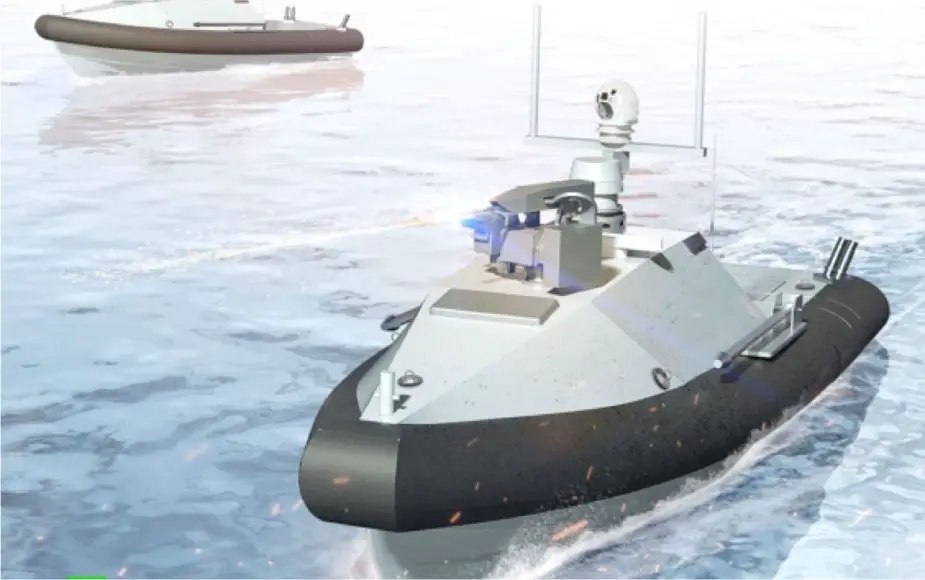Breaking news
South Korea Navy chooses Hyundai Heavy Industries USV Sea Sword.
According to information published by HHI on April 22, 2024, the consortium formed by HHI and LIGNEX1 has been selected as the preferred bidder to develop an Unmanned Surface Vehicle (USV) for integration with the surface fleet of the Republic of Korea Navy.
Follow Navy Recognition on Google News at this link
 Artist rendering of the USV Sea Sword, or Haegeum. (Picture source: HHI)
Artist rendering of the USV Sea Sword, or Haegeum. (Picture source: HHI)
This conceptual design effort will position HHI within the Republic of Korea Navy's "Navy Sea GHOST" project, aimed at pioneering the Next Generation Maritime Manned-Unmanned Combined Combat System.
About Sea Sword
The USV developed by LIG Nex1 can operate in both manned and unmanned modes, with a capacity for three crew members in manned mode. It has a unique feature of maintaining a distance of 500 meters from a tracked target, making it suitable for harbor patrol duties.
The development of the vessel began in December 2015, with the design phase running from February to August 2016. The development was completed in November 2016 on a budget of 33.2 billion won, contributed to by both government (19.5 billion won) and the company (13.7 billion won). The Navy conducted pilot operations through 2017.
In terms of specifications, the vessel has a light displacement of 3 tons and a full displacement of 3.3 tons. It measures 2.6 meters in width and has two length measurements: 8 meters including the waterjet and 7.3 meters without it. The height from the waterline is 3.8 meters, with a total height of 4.2 meters.
The vessel demonstrates high performance, capable of self-righting from a 60-degree tilt and navigating in sea state 4 conditions. It can exceed speeds of 40 knots and offers an operational time of over 12 hours at 15 knots, with a maximum operating range of 12.4 kilometers.
For autonomous operations, the vessel requires remote control during entering and leaving harbors but operates under limited remote control while on missions.
The sensor systems include radar with a detection range of 50 meters to over 6 kilometers, operating in the X-band frequency and capable of identifying up to 128 targets in temperatures ranging from -25°C to 55°C. The sonar system features side-scan capabilities.
The electro-optical and infrared systems can detect targets up to 6 kilometers during the day and 3 kilometers at night, featuring capabilities for 360-degree rotation and significant tilt and pitch speeds. Propulsion is provided by a diesel engine coupled with a single waterjet.
The control systems feature ground-based, onboard, and portable remote control stations. For armaments, the vessel can be equipped with one of three options: a water cannon, a K-6 remote controlled weapon station, or a Hyungung missile launcher.


























